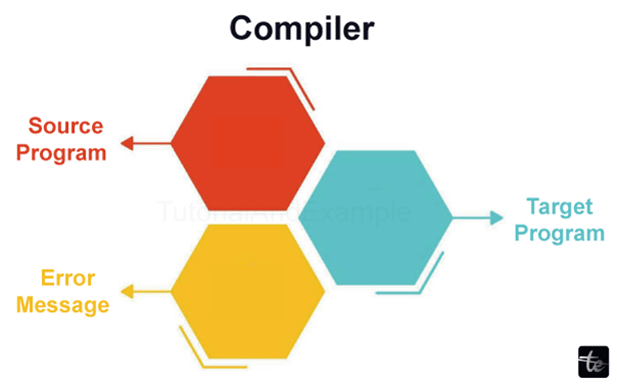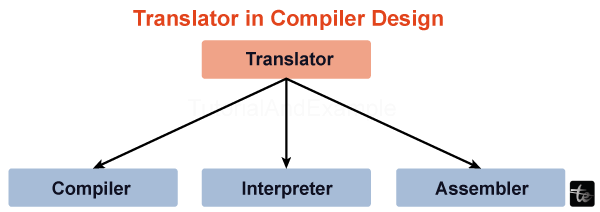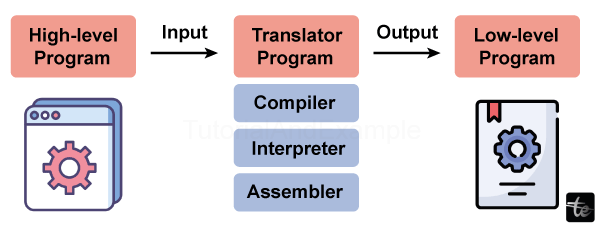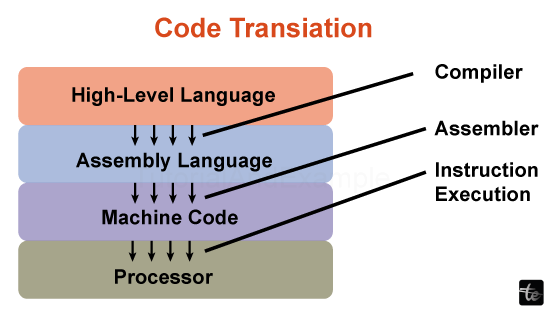Compilers Vs Translators
Compilers Vs Translators
Definition of Compilers
A compiler is an advanced software tool of great importance in the field of computer science, especially in the procedure of converting high-level programming languages into machine code that a computer can comprehend and execute. Basically, it is a bridge between human-readable code and the binary language that computers understand.
In principle, a compiler conducts a series of intricate tasks to convert the source code into an executable form. It works by means of separate phases, each designed with all the details of code analysis and transformation. The phases usually comprise of linguistic analysis, syntax analysis, semantic analysis, code optimization, and code generation.
Lexical analysis refers to the process of parsing the source code into a continuous stream of tokens, identifying the keywords, identifiers, operators, and other language constructs. Syntax analysis, sometimes done with the help of parsers, verifies the syntax of the code according to the grammar rules of the programming language, thus, it is sure that the code has followed the prescribed syntax. Semantic analysis then checks the meaning and context of the code and shows the semantic errors and inconsistencies.

Definition of Translators
Translators are an essential category of software tools in computer science. Their role is to transform code from one form to another. Compilers translate high-level programming languages into machine code, while translators work on different kinds of conversion tasks, including interpretation, assembly, and source-to-source translation.
Translators are mainly the ones who make communication possible between the different representations of code, thus allowing interoperability and flexibility in software development and execution. The main type of translators is interpreters, which is not the case of most other translators, working as a direct execution of the source code without any prior compilation. As opposed to the creation of machine code, interpreters do the translation and the execution of the code one line at a time, hence producing the machine instructions on the spot.

How do Compilers work?
Compilers are arguably one of the most intricate fractions of software engineering with the pivotal role of translating high-level programmable languages into machine language, which is the binary language prone to use by computers. Compilers refer more to how it is done and the order of steps that are taken to translate the code written in one language to another that will create a program.
The process at compile time begins by obtaining the source code, written in high-level languages such as C ++, Java, or Python. It has a few phases that help examine the code being compiled, alter it for optimization, and then generate executable code out of it.
This phase is also referred to as the scanning or linguistic analysis, and in this phase of compilation, the source code is divided by the compiler among the stream of tokens. These tokens represent parcels of the language construct, such as keywords, identifiers, operators, and other symbols of punctuation. In linguistic analysis, the source code is scanned from left to right, and each token is defined as a word or symbol based on the syntax of the language.
Source code is checked for syntactic structure or linguistic analysis, which, in essence, is parsing done by the compiler to ensure it complies with the grammar rules of that language. The working phase is a phase where different structures of code are compiled into a parse tree or an abstract syntax tree. The parser is another tool used in programming and is mainly used to detect syntactical anomalies and discrepancies and verify that the code embodies the syntactical regulations of the language.
Next, the compiler goes to the semantic analysis stage, where the code’s meaning and content are examined for semantic errors and adherence to language rules. This period has type checking, scope resolution, or other semantic checks that should determine the program's correctness and consistency. The semantic analyzer, therefore, constructs the parse that has additional features, such as the data types and the scopes of the variables, aiding in the later phases of optimization/ code generation.
Following that, there is the optimization phase, where the compiler goes through the code once again in the process of the code being optimized. The common optimization methods may be loop optimization, dead code elimination, and others, and are some of the widely known techniques. The optimizer verifies the annotated parse tree to look for any enhancements that may be made and creates the code utilizing the transformation formulas to produce the enhanced code.
The final step is the code generation step, where the compiler literally converts it to machine executable language that is to be interpreted by the target hardware. This step aims at translating the high-level language characterizing the step constructs into the machine instructions and, in doing so, forming the binary codes of the instructions. The code generator’s purpose is to take the given machine code instructions to an understanding format of the target architecture format, which includes the assembly language or the object code.
The final phase of compilation is code generation, where the compiler writes out the direct code that is ready to be run on the target platform. The combination of code is inherent with the everyday functionality and deep logic that was expressed in the source code and is converted into a form that the computer can easily process.

How do Translators work?
Translators are integral components of the software development process, facilitating the conversion of code from one representation to another. They operate by analyzing, transforming, and generating code in various languages, enabling developers to write programs in high-level languages and execute them on different platforms and architectures. Understanding how translators work involves examining the principles and techniques employed by different types of translators, including interpreters, compilers, and transpilers.
Types of Translators
Assemblers
An assembler is a type of translator that conducts the translation process of converting assembly language code into machine code. Assembly language The language is a low-level one that maps each mnemonic to the equivalent form of a machine instruction. Hence, programmers have a slightly easier task compared to issuing direct binary instructions.
These generally include instructions on how data is to be defined, labels on how data is stored or how it can be processed, and control structures. It is the assemblers that are usually involved in programming the embedded systems and the generation of low system-level software.
Interpreters
Interpreters are those translators who do not require pre-compiling the source code and directly translate the source code. However, unlike compilers with interpreters, the entire given program is translated into the machine code before the interpretation and execution process. Still, the code is translated and executed line by line, thus interpreting each line at the time of its execution.
This system allows the creation of prototypes, the code execution, which is malleable, and the debugging very graphic because the programmers can see the implication of their code very quickly without having to pass through the compilation phase. They are most often used in scripting languages, operating system shells and environments, and in teaching, and that is because of their versatility and alterable or promptness.
Preprocessors
Preprocessors are those translators who change the source code before passing it to the next stage of translators or instructors for the next processing. They are usually used in the context of substituting definite texts and compiling the code in terms of the certain rules or directions that are defined in the assignment.
These precompilers are mostly used to include heads, declare macros, include files, and code conditionally, depending on parameters that could be platform-specific or defined by the user. Compilers are the ones that come after parsers and work to compile a program, and among preprocessors, the most used are ‘C preprocessors’. However, there are facilities for pre-processing languages like ’JavaScript, PHP, etc.
Decompilers
The translators that reverse the compilation process by translating the machine code or the executable programs into the higher forms of the languages, such as the assembly code or the source code. Decompilers, as it will be recalled, attempt to reconstruct the source code and provide the user with a machine code that closely resembles it, unlike the disassemblers that provide the user with a direct translation of machine code into assembly language.
Decompilers are effective instruments in reverse engineering, examination, and understanding of the functioning of applications that were initially written with a ‘black box’ approach or when created a long time ago.
Transpilers
Transpilers are also referred to as source-to-source compilers. They are specifically the sort of compilers that interpret code from one high-level programming language and transform it into another code but also of the same or another high-level programming language. Unlike the trans compilers that are translators of the high level code to the machine code, trans compilers work at the source code level and convert the code from one language to another that is semantically the same language. .
Such tools as Babel for JavaScript and TypeScript, which is a tool to transpile TypeScript code into JavaScript, demonstrate how the given technology can make code compatible across browsers.
Cross-Compilers
Cross-compilers are translators that translate the source code into the target language and generate executable code for the target processor while the compiler is running on a different machine. A cross-compiler is one in which the code generated is for an architect or operating system different from that of the compiler in use as compared to native compilers, which use the same platform for generating the code as is used by the compiler.
Cross-compilers are the most common means of creating embedded systems applications, using software for different architectures and in cases when it is impossible to execute code on the target platform, or it is more efficient to do so otherwise.

Translation Process
Translating code in software development entails converting code from one syntax or language to another. It is also required in many instances, such as porting the code to a different platform, interfacing with another system, or optimizing code regarding processing speed and/or code maintainability.
Analysis
The first translation activity is the analysis phase, in which all information necessary for the further process is collected; it includes knowledge about the source code and the software it is a part of, the dependencies, and the semantics.
This is the phase of analysis where the code is divided into its constituents, subsequently building an abstract compliable model such as a parse tree or an abstract syntax tree (AST) to ascertain the syntactical and semantically constitution of the code.
The most crucial part of the analysis is the external dependencies, which are the libraries on which the program depends, the identification of the structures specific to the selected language that may be needed, and how they are to be resolved.
Semantic Mapping
Following the code analysis, the next procedural step is one of semantic mapping, which consists of transcoding the terms and idioms belonging to the source language into the corresponding linguistic structures of the target language. The second phase focuses on the identification of how the source and the target language are similar and where they differ, as well as on the method of presenting them.
Semantic mapping might include the translation of language elements, data, and structural and control flow constructs that are needed for preserving compatibility and consistency of the code that originated and maintained in the source and target languages.
Transformation
The first process is the mapping process, by which the functional relationship of the code is determined, and then the process of actual transformation of the code happens. The compile-time translation is all about rewriting the code in accordance with the rules and standards of the target language without changing the functionality and behavioral pattern of the said code.
The considered transformation might be reflected as the transformation of language constructs into corresponding syntactic units of the new language or as the complete change of the language-specific particulars into other constructs of the target language and, in addition, as the adjustment of algorithms or data storage types for the new language environment.
Transformation can also be interpreted to mean what is done to make the code leaner, cleaner, or any other better form that is suitable for the target machine or the intended use.
Validation
The translated code is then used to ensure that the process of translation has been effective and that the code performs to the expected capacity. Some common validation steps may be, for example, the validation of translated code against a test case suite, the application of some forms of analysis for probable issues, and finally, a comparison of the behavior of the translated code with a set of behaviors of the original code.
The validation process aids in establishing that the translated code is correct, accurate, and efficient and that it is aligned with the expected functionality of the coded application.
Integration
When the code that has been translated is checked out, it can be put into the target environment or system. This stage comprises the incorporation of the translated code into the existing codebase, the linking of it with other components or libraries, and the setting-up of the code to work in the target platform or ecosystem.
The integration of the translated code into the existing system may also entail the modification of the build systems, deployment processes, and development workflows to fit the translated code and guarantee that it works well with the rest of the system.
Optimization
In certain cases, further optimization of the translated code may be done in order to enhance its performance, efficiency, or resource utilization, especially when the requirements and constraints of the target environment are taken into consideration.
The optimization methods can be optimized, for instance, through code refactoring, algorithmic improvements, and platform-specific optimizations that are tailored to the target architecture or run-time environment. The optimization guarantees that the desired performance goals are achieved and the code performs optimally in the production environment.
Difference between Compilers and Translators
Scope
Input and Output
Execution Model
Optimization
Conclusion
In Conclusion, the comparison of compilers and translators shows the different functions and the importance of both in the software industry. Compilers are good at translating entire programs into optimized machine code, but translators are the broader tools that include interpreters, transpilers, and decompilers, which are the main tools for language interoperability, dynamic code optimization, and cross-platform development. Both the compilers and the translators are the major elements of the software development ecosystem, the ones that have made software development more innovative, efficient and flexible. The knowledge of the differences between them allows developers to make the right choice of tools and techniques for their particular requirements, thus the creation of high-performance, secure, and maintainable software systems.